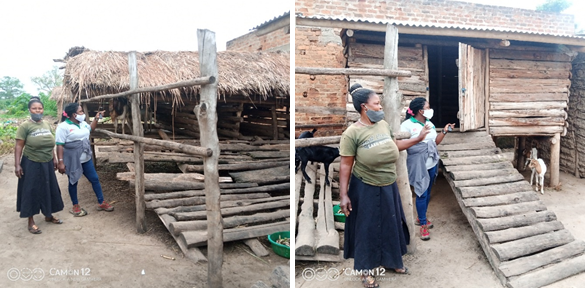Community Partnerships Mitigate Human-Wildlife Conflict at Queen Elizabeth National Park in Uganda
Mariam (64 years) is a subsistence farmer. She lives with five grandchildren in the Southern Sector, popularly known as Ishasha Sector of Queen Elizabeth National Park (QENP). While this is Mariam’s home, it neighbours the National Park whose inhabitants—carnivores, including lions, leopards and hyenas —freely roam into communities to predate livestock.
Mariam’s goats were killed by lions causing her to have a less-favorable attitude towards them. “The lions came and killed 27 goats,” reminisces Mariam who had hoped to sell them to educate her son. As a result, many communities gave up this livelihood while others risked their lives by staying up all night to scare them away. On another front, some communities decided to kill them in retaliation for the losses.
Creating partnerships to mitigate human-wildlife conflict
In 2018, Wildlife Conservation Society (WCS) with support from Lion Recovery Fund (LRF) partnered with communities neighbouring Queen Elizabeth National Park to implement human-wildlife mitigation strategies that make subsistence farmers less vulnerable to livestock loss, while protecting important wildlife species. “This intervention would not have been successful if we had not engaged communities,” says Carol Twahebwa, WCS Community Liaison Officer. “Community members have been instrumental in mitigating human-wildlife conflict, through their participation in planning, implementing, monitoring and evaluating the carnivore-proof pen popularly known as the ‘boma’.
Replicating ‘bomas’ to protect livestock from lions

Jeninah is one of eight scouts that have been employed by WCS to support replication of ‘bomas’ in the community. Jeninah recollects how at project inception, the initiative was met with resistance and unacceptance to the community. The communities would tell me, “We do not believe that this strategy works. We keep our goats in the same ‘bomas’, and they have not solved our problem”. “To change the communities’ negative perception towards wildlife, we conducted community sensitization and awareness dialogues to demonstrate how ‘bomas’ prevent livestock loss and support conservation of wildlife,” says Jeninah who moves around the community to raise awareness about wildlife conservation. After observing the construction of 14 demonstration ‘bomas’, and confirming their effectiveness through testimonies shared by the first beneficiaries, they accepted to replicate ‘bomas’. “Since I started keeping my seven goats in this pen, lions that still continue to come around cannot reach them, and the goats cannot stampede out of the pen to be eaten by the lions, and I can educate my grandchildren” reiterates an overjoyed Mariam, a beneficiary of a demonstration ‘boma’.
Owing to their effectiveness, the scouts also constructed ‘bomas’. “Like many communities, I never used to rear goats because I feared that they would be killed by lions, but when I participated in the construction of a demonstration boma, I built one for myself,” says Jeninah. “Today, I have ten goats, five pigs and 20 chicken,” adds Jeninah who together with other scouts also use their homestead ‘bomas’ to demonstrate how to manage livestock in wildlife protected areas. Through a cost-sharing program where communities provide timber off-cuts and WCS provides iron sheets, over 43 carnivore-proof ‘bomas’ have been replicated in Ishasha sector, reducing livestock depredations from 53 reported in 2018 to four reported in 2020.